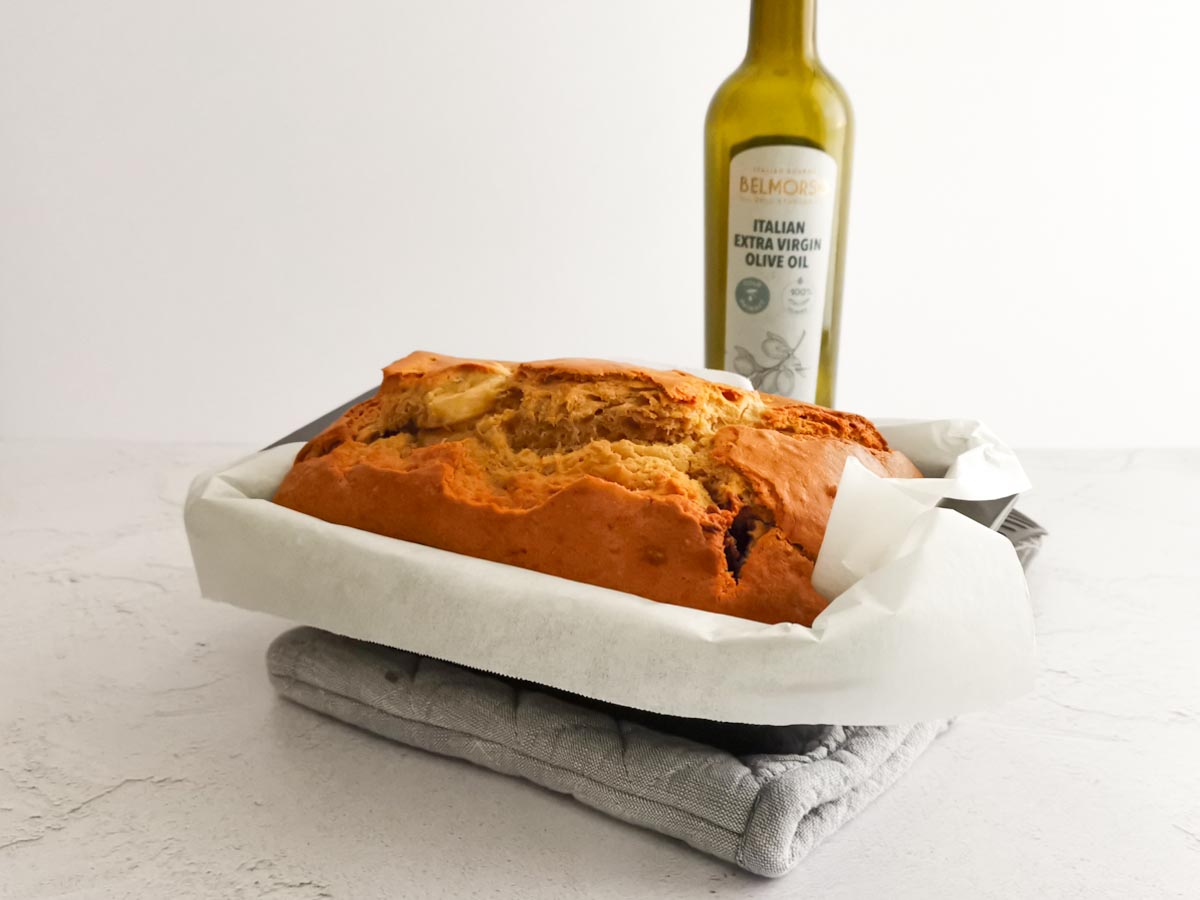
Easter All Around the World
We are excited to take you on a tour to explore the different customs and traditions that take place around the world to celebrate Easter.
For Christians, Easter is one of the most important days of the year. A celebration of the death and resurrection of Jesus Christ. It is joyous because on Easter He showed himself, rising from the dead three days after being killed and defeating Evil forever.
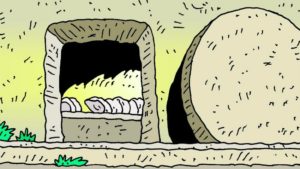
The customs and traditions linked to the celebration of Easter can be different in each country. Some of the most popular elements are candles, flowers, eggs, bunnies and eating wonderful food.
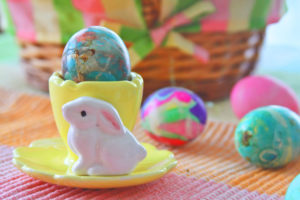
Candles
In churches, the celebration of Easter Sunday start at midnight on Easter Eve and all over the world, they use candles to remember that Jesus is the light of the world.

Furthermore, in some churches, the service starts in the darkness. Then, they lit twelve candles and they take them all around the church to light the other candles. In Greece, sometimes they also use fireworks to start the service.

In Italy, the Pope holds a very large Mass or Communion service in St Peter’s Square, in the Vatican City. Thousands of people from all over the world go there to celebrate Easter Day.
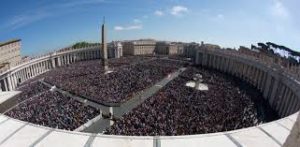
Easter Flowers
There are many flowers associated with Easter festivities. Centrepieces are made with elements like rabbits, eggs or baskets to set the Easter scene. Beautiful displays representing new life are used to decorate houses, churches and public places.
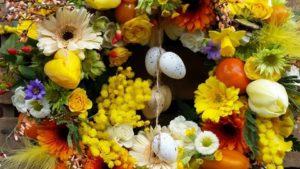
Some of the most popular flowers representing Easter and the beginning of spring are Lilias and Passion flowers.
For instance, Lilies, often white, are seen as purity and goodness. For Christians, is a symbol that memorises the purity and perfection of Jesus when he died on the Cross.
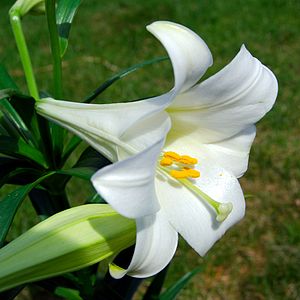
Over the years, Passion flowers have been given many different meanings. Such as the three stamens, signifying the Trinity of God, Jesus and the Holy Spirit. The circle of petals symbolises the crown of Jesus. Moreover, this flower can last for three days, as the number of days that Jesus spent in the tomb.
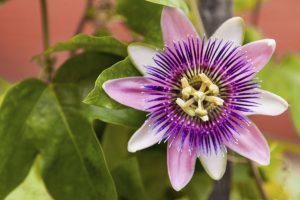
On the other hand, flowers are also used to create colourful Easter Bonnets that symbolise spring renewal. Initially, these type of hats were used by women to go to church on Easter Sunday. Nowadays, many shops on 5th Avenue in New York display fascinating flowery Bonnets and compete for the best designs.
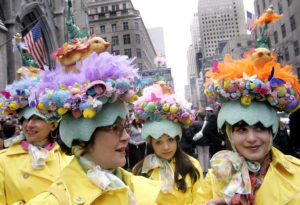
Easter Passion Plays
In medieval Europe, most people could not read or write and the representation of Passion Plays was a popular way to explain the stories of the Bible.
For instance, one of the most famous Passion Plays telling the Easter story is still performed in the German village of Oberammergau. The whole village takes part on the play that lasts for eight hours!
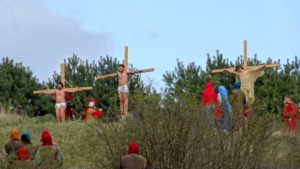
Passion Plays are also performed in many countries like U.K., Spain, Italy, Mexico and USA. Sometimes the plays are performed in the language used in medieval times.
Easter Bunnies, Rabbits and Lambs
In Pagan times, Bunnies, Rabbits and Lambs were signs of Good Luck and New Life. Furthermore, these animals are often associated with Easter because their babies are mostly born in Spring.

The Lamb is a symbol of Jesus called ‘the Lamb of God’ in the Bible. This is because, in the Jewish faith, lambs are a sacrifice for people’s sins and wrongdoings.
Easter Eggs and Chicks
Eggs and Chicks have become an important symbol of Easter. In Pagan times, eggs were a sign of Fertility and New Life. Instead, Egyptians and ancient Persians used to colour and eat eggs to celebrate the New Year. A festivity that takes place in springtime for them.
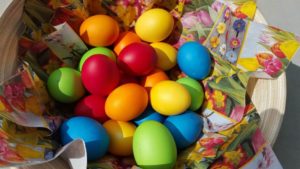
In Europe, coloured eggs were originally used to decorate the house. Eastern European countries like Hungary or Romania used to beautifully paint wooden eggs and Russians boiled eggs in red. Chocolate Eggs have now replaced all of them and are certainly a lot nicer to eat!

In some countries, egg hunts take place over Easter festivities. Eggs are hidden around a house or garden and children have to find them. In addition, egg rolling races are held all over the world on Easter Monday. Eggs are rolled down a hill or slope. The first one to reach the bottom without breaking the egg is the winner.

In countries like France, Germany, Norway and Syria it is a tradition to play egg-knocking games. The game is played with boiled ones and to win you have to hit everyone else’s egg and keep yours unbroken.
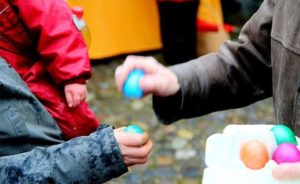
Another funny tradition is the Egg Dance, which is a centuries-old tradition that originated in Germany and is still enjoyed in the UK, the US and many countries around Europe. Rules can differ but it always involves dancing around a floor strewn with eggs and trying not to break them.
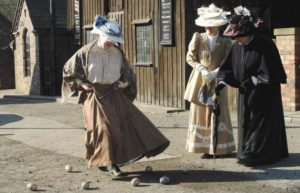
Easter Food
Easter is also the end of Lent and means the end of the fasting period for many people. For this reason, food has also become very important part of the celebrations. For example, in Italy, a traditional plate is salty Pretzels. In Russia, little pancakes called ‘Blini’s’ topped with anchovies.Finally, in Greece, they don’t only make a traditional cake with oranges and almonds but also a lamb soup is a speciality for breakfast!




